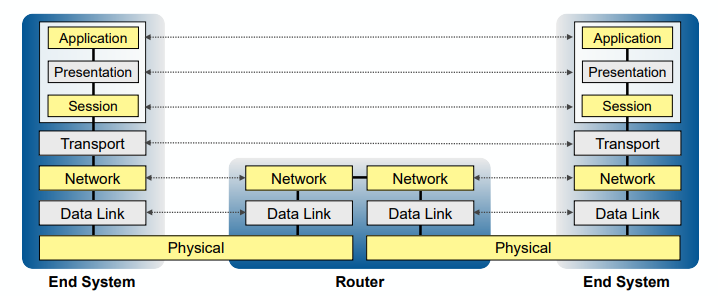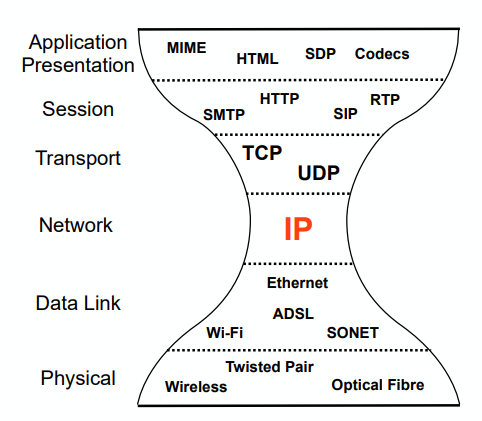Abstract
The OSI Reference Model is a standard model of layered protocol design, though more hypothetical as Real Networks Don’t Follow This Model, as they’re more complex and have sublayers and layer violations. This layered model is however extremely useful for helping structure discussions on networks.
Diagrams


Lower Level Layers:
- Physical Layer Actual hardware that enables communication between computer systems, as raw bit streams
Network Relevant Layers
- Data Link Layer Functionality to manage the data link connections, i.e. from node to node, between computer systems
- Network Layer Functionality to transfer packets between computer systems. This means the routing protocol, and packet format
- Transport Layer Transparent transfer of data, including reliability, flow control, and error control.
Higher Level Protocols:
- Session Layer Control of the connections between computer systems. Responsible for session management, such as recovery and checkpointing
- Presentation Layer Representation of information communicated between computer systems. This could for example include encoding, compression, and encryption
- Application Layer The sole means for the application process to access the OSI env, all OSI services are directly usable by the application process.
Higher Level Protocols
Due to internet architecture we have no clear distinction between the higher level protocols. The general goals are to support application needs through:
- Managing transport layer connections
- Naming and locating application-level resources
- Negotiating data formats, and performing format conversion if needed
- Presenting data in appropriate manner
- Implementing application-level semantics